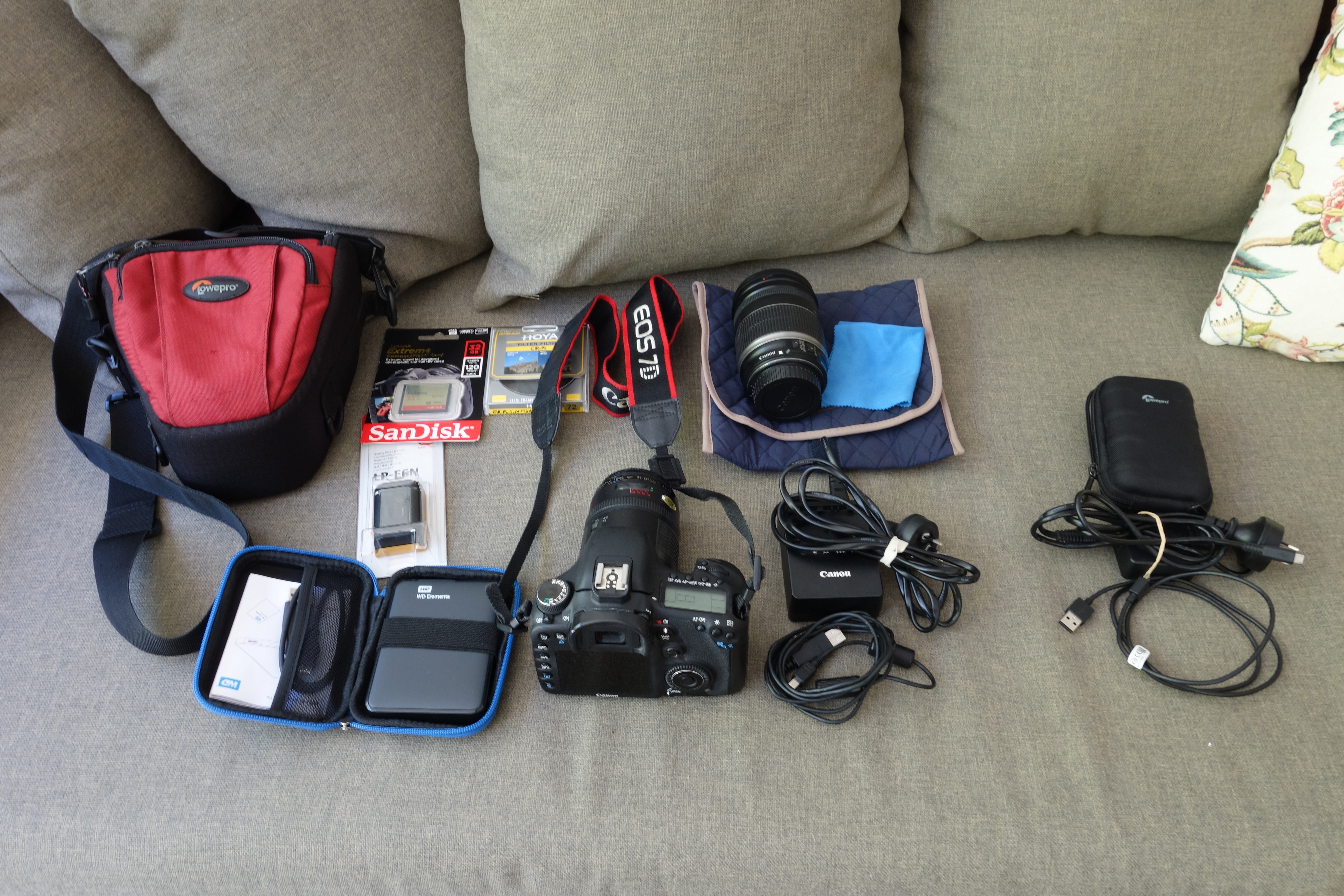Camera Capers

Who could have imagined that I would need a list, just for my camera equipment for this trip?
It has proved to be a particular challenge for me – the camera novice that I am!
Having said this, I am thankful for the course I did before Christmas. I would have totally ‘at sea’ without it.
Even after the course, there was further research required. For example, I knew that I needed to get a filter for the camera, to help cope with the extreme glare from the ice. The problem was that I was advised on two different types. So, which one?
Now, the filter is obviously fitted to the lens. And there would be occasions when I didn’t need the filter.
So, the experienced photographer would just respond by suggesting that I take more than one lens. Then you can swap lenses.
Now, this opens up a new dilemma of lenses!
Argh!
I discovered a second lens, which I vaguely remember Glen buying. But, originally I wasn’t going to take it with me. That is, until I experimented on the weekend, and discovered that it would be ideal. It is an 18-200 mm lens, which gives me a wider view and a better zoom.
Lens decision made!
Back to the filter.
In desperation I decided to google the most complicated (but specific) question I could think of to get me out of my conundrum. Who would have thought that there is this whole community out their focussed (pardon the pun) on taking photos in the Antarctic!!!
Eureka!
Not only have I found my answer to the filter fix I was in. But I have also picked up some more pointers.
So, the other day I purchased a circular polarising filter. And I’m going to mount it on the 18-200 mm lens. I already had a UV filter (on both lenses actually). So that’s good.
And my APC (Antarctic Photography Community) gave me some tips about using the filter and what to consider when setting the exposure. (I won’t bore you. Suffice to say I now have a whole new swag of jargon to toss into my conversations)
The APC also, unanimously, recommended zip lock bags. Did you know that condensation kills cameras? So, the solution is to place your camera in a plastic bag while still outside in the cold, take out as much air as possible, zip it up, and do this all before going back inside the ship. By allowing the gear to get back to room temperature, in the bag, you reduce the risk of condensation causing the camera to become faulty.
I already learnt about image quality in my course. So, I have the camera set to “raw + jpeg”. But this setting uses up memory and storage. I was already a little nervous about having enough space on my laptop for all my photos, and this turned out to be justified. So, I have now also purchased an external hard drive (there was another decision-flowchart-opportunity)
Plus a spare battery and memory card.
Oh, and a bag for the extra lens to protect it in transit.
Phew.
Finally, I think that I have everything sorted!
Oops – this is only for the DSLR; the Canon EOS 7D. I am also taking a Sony Point-and-Shoot camera. (Note the new jargon – very descriptive!) However, there was nothing extra to be purchased for this.
Thank heavens!
In any case, I’ve done my best.
And whatever I have overlooked I will find a way to overcome… in the spirit of a true Antarctic adventure!
One thought on “Camera Capers”
Very entertaining, well written and oh so much to learn. Well done Debbie
Comments are closed.